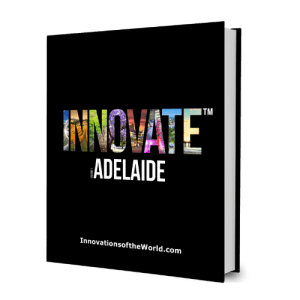How often have you heard something like this: “Australia makes up only 1.3% of global emissions, and therefore why is it so important for Australia to do anything in relation to renewable energy targets and lowering emissions as we are not going to make any difference?”
Make no mistake, sitting under the best renewable energy resource in the world brings an enormous economic opportunity and responsibility to our country. We can develop, demonstrate, and export new business models and technologies harnessing lower-cost renewable energy to the rest of the world. South Australia in particular has always been recognized as a hub for entrepreneurship and innovation as well as a global test market for new ideas, so let’s leverage all of this to give our state a sustainable economic advantage.
To have a rapid transition to renewable energy and lower emissions technologies, it must be simply more economic and effective than traditional technologies. There is no point trying to impart a more expensive cost of energy onto a public that is already drowning in the general cost of living from inflation.
Our largest emitting sectors in Australia making up 86.2% of all emissions as of December 2020 are:
Just a Quick Note:
InnovationsOfTheWorld.com has partnered with Trade License Zone (TLZ) to support global innovators looking to expand internationally. Take advantage of the UAE’s Free Zones—enjoy streamlined setup, low corporate taxes, and a strategic gateway to the Middle East and beyond.
Get Your UAE Free Zone License Fast & Easy!- Energy Generation 33.6% (burning fossil fuels to produce electricity),
- Stationary Use of Energy 20.4% (including manufacturing, mining, residential and commercial fuel use),
- Transport 17.6%, and
- Agriculture 14.6%.
So where do we start to make a rapid impact on reducing these numbers?
Transitioning Energy
South Australia is a great case study in renewable energy coming from a position of “bottom of the ladder,” as Professor Ross Garnaut says, with historically the most expensive cost of electricity generation and supply in the country. This was due to the state’s remote sources of dirty brown coal and poor gas reserves, coupled with being at the spindly end of the eastern electricity grid that runs from northern Queensland to western South Australia. The state was also the laughingstock of the country in its early attempts to transition quickly to a more independent renewable energy supply following the statewide blackout in 2016 and Elon Musk’s first Big Battery completed in November 2017 that everyone said would be a waste of money (it paid for itself in the first 12 months).
Fast forward five years and South Australia has close to the highest renewable energy penetration in the world (over 70% wind and solar generation). The state is now frequently the lowest cost generator of electricity at a wholesale level, and the other states that were either resistant or slow to move are now paying the price as the most expensive.
Low-cost renewable energy can be fed directly to large energy-intensive industries to reduce their cost of operation and take a good portion of their load off the main grid. When coupled with our rich mineral resource base in South Australia, we can leverage that competitive advantage in energy to further process and value-add to our minerals (including high-demand rare earths) and use this to attract a supply chain of high-tech overseas manufacturers. Excess renewable electricity in times of low demand can be diverted to localized hydrogen production.
Our regions can become manufacturing powerhouses with finished goods being transported on hydrogen-powered trucks to a local, more economic shallow port, and then trans-shipped on hydrogen-powered vessels to waiting container ships off the coast.
Hydrogen Production
Locally produced hydrogen as a diesel replacement is economic right now. It will create new local industry and jobs, it’s cheaper than diesel, and can be produced locally alongside and utilizing low-cost renewables as its main input. It has no geopolitical instability of pricing and supply, like diesel and petrol have, and best of all, has NO emissions. It holds three times the energy density of diesel and is produced by running our low-cost clean electricity through water in a process known as electrolysis (not the one used for hair removal).
We must now develop pilot regions where progressive farmers and local governments are willing to (with early support) convert diesel farm machinery, council machinery, and generators to run on hydrogen. This will be distributed from a localized production facility (hydrogen hub) to farms or council yards where it is pumped into local compressed storage tanks for refueling machinery. This demonstrates an internationally desirable “Circular Economy” where we can produce and consume our resources locally for an economic advantage and reduce emissions at the same time.
When converting hydrogen back to electricity, the water is re-captured as a by-product in a closed-loop system, so little additional water is required to produce hydrogen once operational. Remote townships running on banks of diesel generators could now run on solar, wind, and hydrogen instead and be self-sufficient, avoiding disasters when roads are cut off from ever-increasing floods and bushfires.
Transport
As we progress with energy, transport should benefit simultaneously with both battery and hydrogen powered vehicles. Hydrogen will most likely be the economic replacement for larger diesel-powered vehicles and heavy transport potentially allowing distances of 2-3,000km’s on a compressed tank with quick refuelling as this technology matures.
Battery cars capable of 800km’s plus will be entering the market at competitive prices over the next couple of years that will remove consumer range anxiety. They will perform much better, be substantially cheaper to run on clean electricity and have few moving parts to service. The roll out of charging infrastructure nationally is being accelerated in all states in preparation.
Agriculture
The most immediate threat to climate in the agricultural sector is methane. Within agriculture, the largest source of methane emissions is enteric methane from ruminant animals (mainly cattle) released through belching. We have companies in Australia right now (such as CH4) doing ground-breaking work developing seaweed-based feed additives for feedlot cattle that are proven to reduce methane from cattle by up to 90%.
These products enable food industry leaders, producers, and governments to radically reduce enteric methane emissions safely, effectively, and efficiently. Methane has 84 times more Global Warming Potential than CO2 over the next 20 years, making methane a prime target for climate action.
Summary
Building on what is working and what is already economic will show us the pathway forward. South Australia has an enormous opportunity to capitalise on our unique renewable and mineral resources creating an ongoing sustainable competitive economic advantage over the rest of the world. Let’s take this opportunity now and show the world how it’s done, and South Australia can truly become a Renewable Energy Superpower!















